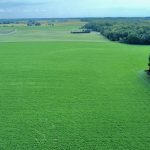Developing agriculture New tool may help international farmers identify appropriate management practices
CHILLIWACK, B.C. — A team of scientists has developed a new crop modelling system that it hopes will improve forecasts to better predict how to feed a burgeoning world population.
The new model blends crop simulations with climate conditions, while adjusting for political, social and economic influences.
Bruno Basso of the department of geological sciences and W.K. Kellogg Biological Station at Michigan State University said researchers ran wheat yield simulations from different areas around the world with distinct soil and climate conditions using 27 wheat models under current climate conditions.
Read Also

Forecast leans toward cooling trend
July saw below average temperatures, August came in with near to slightly above average temperatures and September built on this warming trend with well above average temperatures for the month.
“The models were able to closely reproduce the measured yield in these places. We then used the model to project yield under increasing temperature and CO2 concentrations as predicted by climate models for the next 50 to 100 years.”
Basso is a member of the Agricultural Model Intercomparison and Improvement Project, which developed the modelling system.
The group produced the data, which was then used to project wheat crop predictions that better accounted for political and socio-economic influences.
The research was recently published in the journal Nature Climate Change.
“Increasing yield in places where populations are increasing is very important,” said Basso.
“Food needs to be produced in places where it is needed. There is a strong socio-economic component associated with the adoption of management practices that will increase yield in these places.”
Basso’s team developed a new crop tool called System Approach for Land-Use Sustainability. SALUS forecasts crop, soil, water, nutrient conditions in variable climates and assesses crop rotations, planting dates, irrigation and fertilizer use.
SALUS has been tested in Siberia, Argentina, Europe, Australia, United States, China, India, and Africa.
While the system has been in use for a few years, Basso’s team is designing a web-based interface with Google Earth capabilities. That version will be able to simulate a specific variability of a crop’s yield for use by specialists, consultants or by farmers.
The primary goal of SALUS is to identify the best management practices that will increase farmers’ production and profitability while at the same time help farmers adjust to climate change and reduce environmental impact. It offers production models for multiple years.
“These strategies may have various crop rotations, planting dates, plant populations, irrigation and fertilizer applications (organic and inorganic), cover crops and tillage regimes,” said Basso.
“The program will simulate plant growth and soil conditions every day for any time period when weather sequences are available.”
The study was carried out by scientists at universities and research centres in 15 countries and was led by Senthold Asseng at the University of Florida, under the umbrella of the AgMIP project (www.AGMIP.org).














